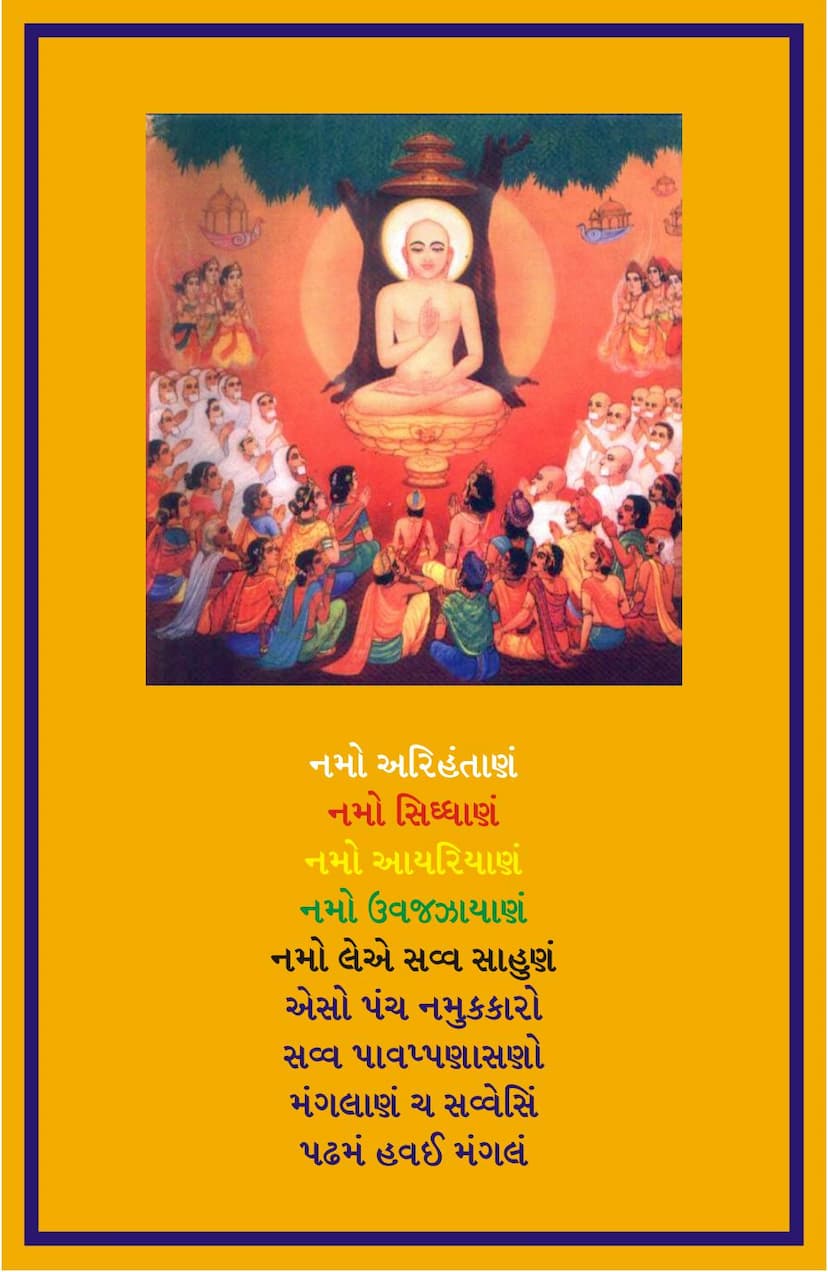Agam 15 Upang 04 Pragnapana Sutra Part 01 Sthanakvasi Gujarati
Added to library: September 1, 2025

Summary
This is a comprehensive summary of the provided Jain text, "Agam 15 Upang 04 Pragnapana Sutra Part 01" by Ghasilal Maharaj, as presented in the Jainqq.org catalog. The summary covers the initial pages, focusing on the introductory elements, auspicious beginnings, and the structure of the work.
Book Title: Agam 15 Upang 04 Pragnapana Sutra Part 01 Author: Ghasilal Maharaj Publisher: A B Shwetambar Sthanakvasi Jain Shastroddhar Samiti Catalog Link: https://jainqq.org/explore/006446/1
Overall Summary:
This document is the first part of the "Pragnapana Sutra," an important Jain scripture, presented with a commentary titled "Prameyabodhini" by Acharya Ghasilalji Maharaj. The text begins with traditional Jain invocations and dedications, outlining the lineage of revered Acharyas and the purpose of the work. It then delves into the strict rules and regulations regarding the study of the original text (Mool Path) and its translations, emphasizing the concept of "Aswadhyaya" (times when study is prohibited) and "Vinaya" (respect and obedience to elders). The initial sections also introduce the fundamental principles of the scripture, its structure, and the importance of auspicious beginnings in any sacred text.
Key Points from the Provided Pages:
-
Auspicious Beginnings (Mangalacharan): The text starts with the Panch Namaskar Mantra: "Namo Arihantanam, Namo Siddhanam, Namo Ayariyanam, Namo Uvvajjhayanam, Namo Loie Savva Sadhunam." This is followed by verses praising Lord Mahavir and a series of revered Acharyas, highlighting their spiritual qualities and contributions to Jainism. The author, Ghasilal Maharaj, humbly states his intention to write the commentary "Prameyabodhini" on the Pragnapana Sutra.
-
Publisher and Publication Details: The publication is by Shri Akhil Bharat S.S. Jain Shastroddhara Samiti, with the first edition printed in Rajkot in 1974 (Veer Samvat 2500, Vikram Samvat 2030). It notes the financial support provided by Shreshthi Shri Amulakhchand Malukchandbhai Kothari and the committee's efforts in reviving Jain scriptures.
-
Instructions for Study (Swadhyaya): A significant portion of the initial pages is dedicated to detailing specific rules for studying the Mool Path (original text) of the Pragnapana Sutra. These include:
- Timing: Study is recommended during the first and fourth quarters of the day and night.
- Prohibited Times (Aswadhyaya): Study is prohibited during dawn (Ushakal), twilight (Sandhyakal), noon, and midnight for specific durations (two "ghadi" which is 48 minutes). This also includes the 24 minutes before sunrise and 24 minutes after sunrise.
- Gender-Specific Restrictions: Women in their menstrual cycle are not to study or be present during study. Study should be conducted in a separate room where such individuals are not present.
- 32 Specific Prohibitions (Aswadhyaya Prasang): These are categorized into two main groups:
- 10 related to the Sky (Akash Sambandhi): These include events like meteor showers (Ulkapath), unusual atmospheric phenomena (Digdah), thunderous clouds (Garjarav), celestial sounds (Nirdhat), lightning (Vidyut), specific twilight conditions (Yupak), celestial light (Yakshadipt), smoke-like fog (Dhumika Krishna), white fog (Mahika Shwet), and dust storms obscuring the sun (Rajoogdat).
- 22 related to the Physical Body (Audarik Sharir Sambandhi): These include situations involving the remains of a body or things associated with death, such as bones, flesh, or blood not fully cremated or washed away if visible (Hadka-mans aur Ruddhira), broken eggs (Phutela Indu), excreta (Mal-Mutra) if visible or emanating foul odor, crematorium grounds (Smshan), eclipses (Chandragrahan, Suryagrahan), political unrest (Rajavyagrata), death of a prominent person (Patan) before cremation or appointment of successor, presence of a dead body within or within 100 hands of the place of study (Audarik Sharir), and specific festival days and their preceding days (Chaar Mahotsav aur Chaar Pratipada) – including Ashadh Purnima, Ashwin Purnima, Kartik Purnima, Chaitri Purnima and the four preceding new moon days.
- Important Note on Translation: The text explicitly states that these Aswadhyaya rules apply only to the Mool Path and not to Gujarati or other language translations. It reiterates that Vinaya (respect) is the foundation of Dharma and that in difficult situations, the wishes and commands of the Guru or elders should be paramount.
-
Structure of the Text (Vishayanubhumishishtha): Page 11 and 12 provide a table of contents or subject index listing various topics covered in the sutra, such as different types of souls (Jiva), non-soul entities (Ajiva), various classifications of matter (Prithvi, Ap, Tejas, Vayu, Vanaspati), the concept of ordinary and special bodies (Sadharan Sharir, Vargit Sharir), sense-based beings (Ekendriya to Panchendriya), human classifications, divine beings (Deva), and the places of the Siddhas. This indicates the comprehensive nature of the Pragnapana Sutra.
In essence, this part of the Pragnapana Sutra sets the stage for a detailed philosophical and ontological discussion within Jainism. It emphasizes the importance of proper conduct and adherence to rules for spiritual study, while also outlining the vast scope of topics to be covered, from the fundamental categories of existence to the nature of liberated souls.